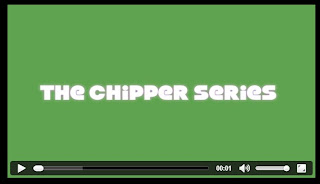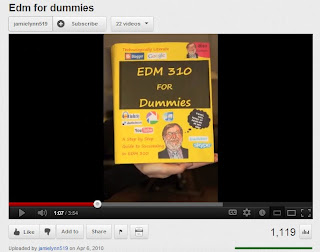Richard Miller: This is How We Dream
In Richard Miller's videos he discusses, what he believes to be, the "greatest change in human communication and in human history." The way we communicate today is very different than the way people communicated 50 years ago, or even 100 years ago. We can now communicate globally in an instant. We no longer have to work or conduct research with a paper and a pencil. We just need our laptops. The need for books is decreasing as well. Virtual books allow information to be spread to the masses rather than one at a time. Sharing information is now becoming infinite. And there is now a possibility for visual, auditory, and virtual documents rather than just printed information.
In the second part of Richard Miller's videos he discusses many different areas of virtual information. Virtual information allows for instant updates. He also mentions that "ideas don't belong to us individually; they belong to us as a culture." He believes educators should share ideas freely. He foreshadows to a time when students will not compose using word processors. He says publications should now pay more attention to the visual and auditory experience rather than just the information itself. Virtual ideas are spread throughout more rapidly than printed ideas.
Then Miller mentions a new and upcoming mode of composing: composition using the web directly. This method includes using the web as your processor instead of the alphabet or images. This work was discovered and performed by Jonathon Harris. Harris wanted to present the affect of the globe. He used aggregations of the web to produce visualizations from blogs around the world. This then determined the profile of the world moment by moment. This method allows for instant information.
Miller's videos opened my eyes to new and upcoming forms of information processing. The possibility of maybe one day being able to conduct research by using the web itself interested me greatly. What I took away from his videos was that virtual information is more useful and, should be, more entertaining than printed information or documents. As a hopeful educator I should be thinking about the ways communication and processing is changing and I should adapt accordingly. An educator's teaching environment changes when technology changes. And as an educator, you should be able to teach your students how to use the new forms of communications. I remember taking computer classes in high school. I also remember working on computers in kindergarten. We used the old Macintosh computers that probably couldn't fit five of the songs off my iPod on its hard drive. In that ten year span from kindergarten to high school the technology changed rapidly. If technology continues to change at that pace we have to be able to keep up for the sake of our students.
Miller did have a few points that I did not agree with. The idea that "ideas don't belong to us individually, they belong to us as a culture" is nonsense to me. If that were the case, then electricity wouldn't have been discovered by Benjamin Franklin. The colonies would've founded it. If ideas were just thrown together in a socialistic pool no one would ever get credit for anything. Another point I did not agree with was the idea that publications should put just as much emphasis on the visual and auditory aspects of a virtual document to "make it beautiful" (2:50 Part Two). A work does not need to be "beautiful" to be compelling. State your facts in a compelling way and there won't be a need for smoke and mirrors. But those two little insignificant remarks were all I had an issue with. The rest I found to be very informative and interesting.
Carly Pugh's Blog Post #12
I thought Carly's post was a great example of combining everything we've learned in Dr. Strange's class. I will also add that I was overwhelmingly relieved to figure out that I did not have to actually carry out her assignment. But her idea of using YouTube as a medium for education is a great idea. Practically every student in every grade knows what YouTube is and has used it before. Her idea is modern and even lets the student put a personal touch on their finished product. It offers creativity, thought, and computer skills. It is an exact model of Miller's idea of composing with multi-media. Kudos to Carly for a job well done!
The Chipper Series and EDM310 for Dummies
The main message behind the The Chipper Series was to help students realize the importance of an education. Chipper overreacts to Dr. Strange's curriculum and doesn't understand his teaching methods so she drops out of school. She then opens up her own school and unknowingly uses the same basic premise as her teaching method: hands-on learning with technology. In the long run, Chipper realizes the importance of an education and goes back to school after waiting tables and picking up trash. No one wants to be a "Chipper". Get your degree while you're in school now and don't slack off.
This video wanted to relate to other EDM310 students. They wanted to show a sense of "you're not alone" in this hectic class we're participating in. Just making time in your schedule to attend to all of the assignments each week is hard enough. It's easy to become overwhelmed. This video took a comical approach at showing that this class is worth the work. You learn new and interesting ideas on how to construct your future classroom. You virtually meet and interact with people, educators, and other students around the world. This video was a good representation of what you're feeling when you're currently taking the course and the beneficial outcome once you've finished.
The Video I Would Assign or Create
Ever since I edited the podcast video on the Mac in the Lab, I've been recording and taking pictures of everything. I downloaded the iMovie app onto my phone and I've already created two little movies on my own. You can see one of the videos below.
To incorporate this into a normal classroom setting, iMovie could be used at the beginning of the year, or semester, as the "introduce yourself" assignment. I know every year in grade school I was forced to fill out a bland questionnaire about my hobbies and interests. Even in this class, our first blog post was to write about ourselves. I'm sure this was just to get eased into the blogging environment; but, an alternate assignment could be made out of that: the option to create a movie about you and your life. It offers a wide range of options. You could make a slideshow. You could dramatically demonstrate important parts of your life. It would more clearly portray someone's personality and it offers a more creative option.
Learn to Change. Change to Learn.
This video discusses the fact that the education system is not utilizing the technological resources to the extent it should be. "The US Department of Commerce ranked fifty-five industry sectors by their level of IT intensiveness. Education was ranked number 55, the lowest, below coal mining." Schools today are based on administration, control, and order. Schools are places where students are required to turn off any technological device. Those devices allow for a multitude of communication opportunities. "Every turned off device is a turned off student." This video stresses the importance of bridging the gap between students using the internet and educators using the internet to teach and instruct students. The jobs students are going to be applying for are not going to call for the "right answer, vending machine" approach." Those jobs are going to require artistic skills, understanding, and teamwork. They are not going to be asked to regurgitate information. They are going to be asked to find information, use information, and to solve problems with that information.
I agree with everything in this video. I know my high school experience taught me extremely little although I did very well. This was due to the fact that almost every class was based around doing worksheets and looking up, and copying definitions out of a textbook. I would never run my classroom the way I was taught in high school. I plan on being a secondary teacher. Teenagers are brutal, and most of all, lazy. You have to teach in a way that will relate to those students or you're never going to grab their attention. For me, that is a big deal. I want to be able to teach them something and have them retain it. If that means my job becomes a little more difficult, so be it. You have to incorporate subjects you know they enjoy into something you know they may struggle with. Have students communicate through Twitter or Facebook and find images of the subject off of Instagram. Have students look up projects off of Pinterest that relate to the subject. Allow them to use social networks in the classroom. Allow them to use technology and apply that to their school work.
Scavenger Hunt 2.0
3.) I created my own comic using Make Beliefs Comix.
4.) Animoto is a video tool that can be used by teachers to create elaborate presentations for their classroom. The heart of Animoto is its cinematic technology. This system organizes and analyzes all of your music, photos, and images together to create your presentation all by itself. Animoto is also available as an App so you can take the tool where ever you need it on your mobile device.
5.)I created a poll using Create a Poll.
To watch the tutorial for Web 2.0 yourself, please click here.






Hey Hillary!
ReplyDeleteI really enjoyed your post! I agree with you about how all technology is changing so rapidly even since we were in kindergarten. I think that teachers should keep up with the technology for their students so they can incorporate it into their classrooms and lessons. You made some great points in your post especially your point about the ideas and culture. I was also relieved that we didn't have to do Carly's assignment. You had some comma mistakes that I have found. Keep up the good work!
-Kelsey